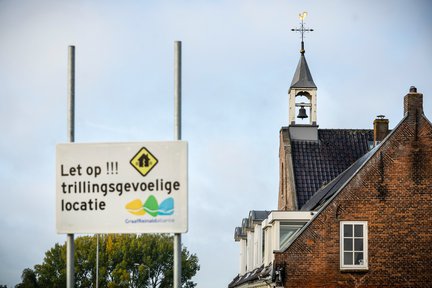Major step in Gorinchem-Waardenburg dyke reinforcement project
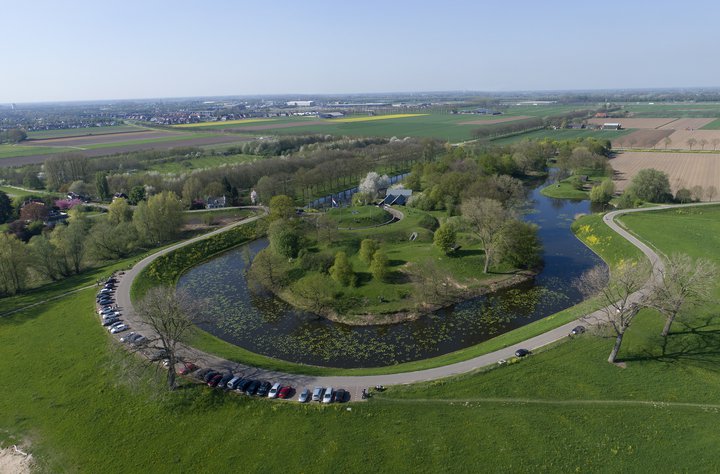
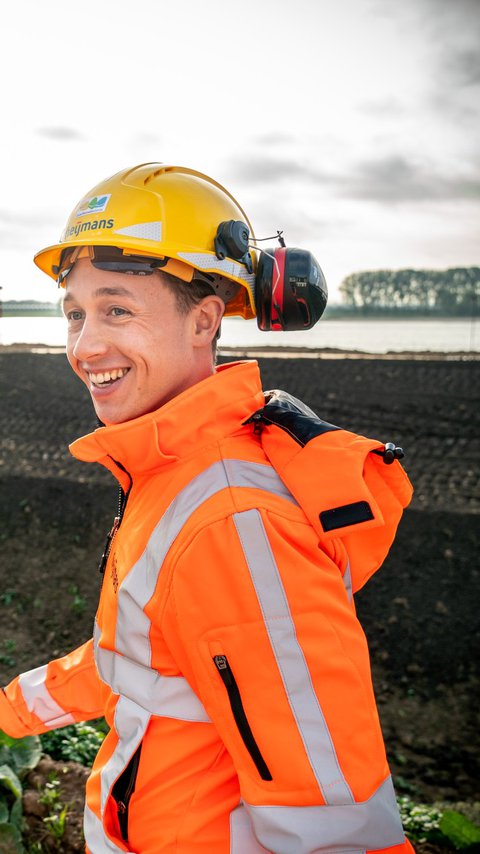
Confining a river is very old-fashioned. In the year 2022, you want to use smart solutions to combine water, landscape and safety. Heijmans and its alliance partners have managed to do just that really well in the Gorinchem-Waardenburg dyke reinforcement project. Into the clay with Bram Verbeek.
Excited, Bram looks out over the River Waal. No, he didn’t grow up here. He was born in the Westland area, famed for its greenhouse horticulture. Did Bram have any horticultural ambitions? Bram: “I picked greenhouse tomatoes, but that wasn’t a great success. I had lots of green tomatoes in my section and I’m colour-blind.” Fortunately for him, he regularly cycled along the Nieuwe Waterweg canal. The Maeslantkering storm surge barrier in particular sparked his interest in civil engineering. He studied hydraulic engineering at TU Delft and obtained a Master’s degree in flood risk. For the layman, this is the world of thigh-high waders and sandbags, for Bram the familiar world of weak dykes, design storms or Darcy’s law, which describes the flow of groundwater.
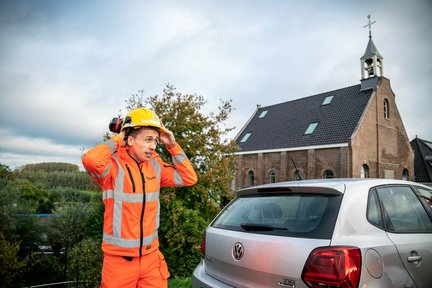
Since the spring of 2021, he has been a site engineering coordinator and project consultant for Heijmans on the Gorinchem-Waardenburg dyke reinforcement project. The project is part of the national High Water Protection Programme 2050. To keep people’s feet dry, a number of water boards and the Ministry of Public Works and Waterways (Rijkswaterstaat) are working together to reinforce around 1500 kilometres of dyke. Bram: “The Gorinchem-Waardenburg section is one of the most urgent reinforcements in the Netherlands. We are tackling 23 kilometres and we’ll be working on that until 2026.” The client is the Rivierenland water board. The Graaf Reinald alliance, which includes Heijmans, GMB, de Vries & van de Wiel and the water board, is responsible for the design and implementation of the project. RoyalHaskoningDHV is providing advice and support.
The Dutch and dykes? It is a complicated marriage. The 1953 flood disaster is etched in the collective memory, as are the dyke shift in Wilnis in 2003 and repeated floods in South Limburg. So it’s hardly surprising that safety standards are high in this area. At the same time, past experiences have shown that constraining a river is not the right approach. “The basic principle is better safe than sorry, but room for the river is just as important as a high, strong dyke,” says Bram.
“Furthermore, when reinforcing dykes, you need to think carefully about the impact on residents, nearby businesses and Natura2000 areas.” Finally, climate change is having an impact. “Not only on the design, but also on the implementation. Showers are heavier and droughts are more extreme. Since early 2021, we have already experienced high water twice – once even in summer. You have to stay alert.”
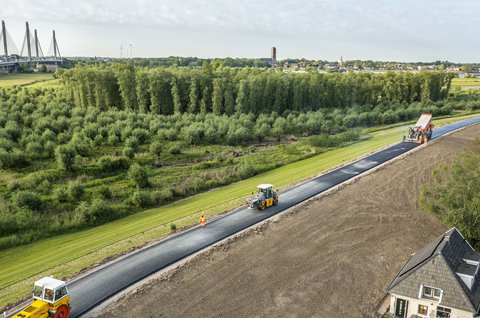
First a crash course. You assess dykes for failure mechanisms, including height, stability and piping. In the latter, water flows through a sand layer beneath the dyke and then rises again inside the dyke via a pipe. “We investigated what was wrong in each of the 14 dyke sections, some 50 subsections altogether. Almost everywhere on this stretch, two or three failure mechanisms are in play. Then you start looking at how best to reinforce the dyke.”
Roughly speaking, there are two ways to do this: install sheet pile walls or widen the dyke body by adding more soil. A combination of these is also possible. “The preferred option? Soil, because of its lower cost and expandability.” When there is no other option, the Count Reinald alliance installs sheet-pile walls that act as stabilisation screens. They extend 10 to 25 metres underground.
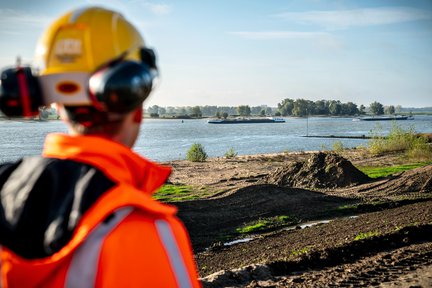
Wilma
For those with a ‘dyke’ of a memory: shovels and steel plates were already a common sight along this part of the Waal in the 1990s. “Yet new reinforcement is now needed,” Bram knows. “A lot of energy has been put into optimisation. Thanks to new measurement techniques and calculation methods, we can now determine the safety of a dyke much more accurately. That prevents unnecessarily heavy designs.”
Several dozen Heijmans employees are involved in the project. But the most talked-about is Wilma. Always in a good mood, never ill, incredibly smart: “Wilma is an innovative dyke design tool that we developed as an alliance. Wilma combines the smarts of a geotechnical engineer with enormous computing power.” And it’s certainly not a one-hit wonder, as Wilma is already proving its usefulness in one of the alliance’s Utrecht projects as well: increasing the stability of the Sterke Lek dyke.
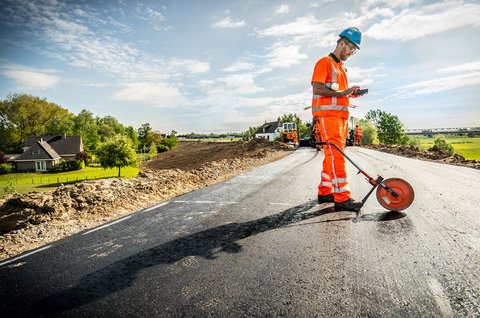
Smarter design saves time and money. Above all, it does more justice to residents, the surrounding area and nature, says Bram. “You want to minimise inconvenience and create a healthy living environment in addition to a safe dyke. That is working reasonably well. Between Gorinchem and Waardenburg there are dozens of dyke homes and hundreds of houses. This is why we have environmental managers, as they ensure good interaction with residents, local businesses and users.” On a side note: on this project, a 'train' of contiguous works is not possible, as some land acquisition files are not yet closed. It is one of the reasons why the alliance is working on several sites simultaneously.
We are on an inspection tour at Vuren, east of Gorinchem. It is busy on the River Waal, where the barge Hanneke and freighter Saale from Würzberg are passing a slow push barge. Meanwhile, Bram guides his visitors across the brand-new outer dyke. Its core is sand, the outer layer waterproof clay. The dyke here is half a metre higher and considerably wider than its predecessor, on which the houses are located. There is a slope of some 20 metres between the old and new dyke, which will be raised a little more. This will turn the old dyke into the ‘shoulder’ for the new one.
Room for the river is just as important as a high, safe dyke’
What makes this project complex is the soil structure. It is a mishmash of soft clay and peat, including old river beds and backfill materials used to repair earlier dyke breaches. An additional gift: “In certain places in the soil, we find a lot of misfires from brickworks. That industry was here for centuries. This is why we have a crusher at the soil extraction site. It makes so much noise.”
Furthermore, the design is tailored to the character of the Waal - the river is wide and winding. Bram: “If we take something away from the water systems, we compensate with storage elsewhere. Otherwise you get a funnel in which the water starts to rush. For instance, we make gullies parallel to the river and we use the soil we extract for dyke reinforcement for these.”

Vertical lines in a horizontal landscape: every hundred metres, four poles protrude above the new dyke. These are digital pocket beacons, which accurately measure subsoil settlement. The average settlement right now: twenty to thirty centimetres a year. “Thanks to the pocket beacons, we can see more quickly when we need to add embankments or when the dyke is ready for a road to be built on it.”
Bram and his colleagues also feed Wilma other data. Monitoring wells, some sticking up to 10 metres deep into the dyke, measure groundwater levels. At the bottom of the dike, blue pore pressure gauges protrude from the ground. They measure groundwater pressure. Bram: “The water board has given us the opportunity to set up a wide range of monitoring tools. We are happy with that. It speeds up the process, without compromising on safety. We can also spot problems before they lead to damage.”
